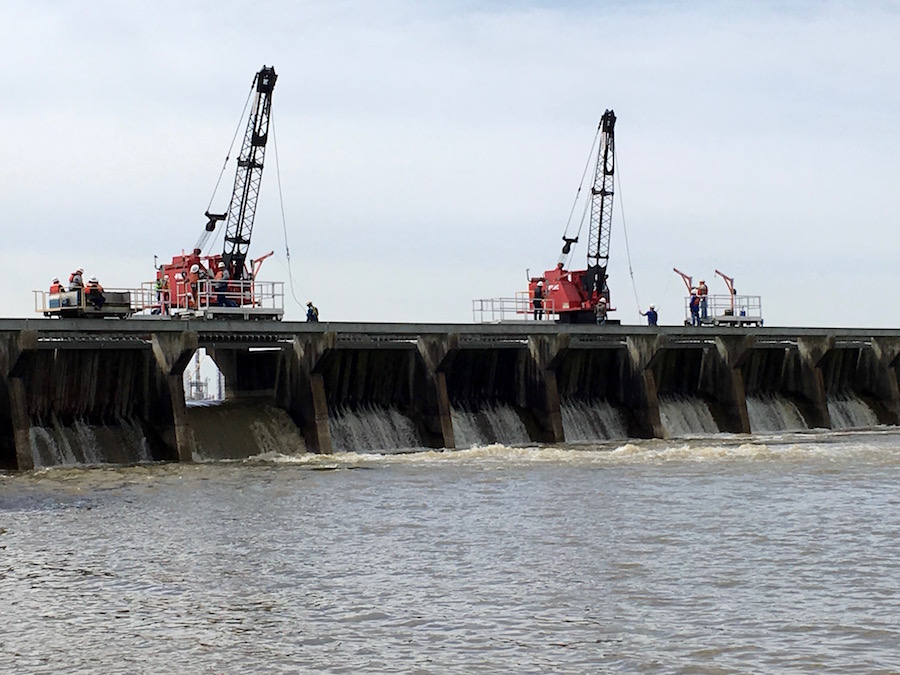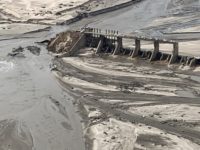For the second time in three years, the Army Corps of Engineers has opened the Bonnet Carré Spillway in Louisiana to manage uncharacteristically early floods on the Mississippi River.
"We are at a high river, roughly top 15 or so in the river's last century," New Orleans District Commander for the Corps Col. Michael Clancy said on March 8 before ordering the spillway open. "It's not a record-breaker, but it's still a significant flood that poises a significant risk to New Orleans."
"This may be a long high water season," says David Ramirez, chief of water management at the New Orleans District. The spillway, which has been opened only 12 times since it was built in 1931, is typically opened in April or May. The last time the spillway was opened was in January 2016.
The Corps opens the spillway when it appears the river could exceed 1.25 million cfs in New Orleans. Without the release, the volume would have reached 1.4 million cfs and 18.2 ft, according to Ramirez. The river was 15.7 ft on March 8, just below the 17-ft flood stage at the gauge in New Orleans. The levees in New Orleans are designed to protect up to 20 ft.
On March 8, eight of spillway's 350 bays were opened, diverting about 5,300 cfs, and an additional 13 bays were opened March 9. The Corps expects to open about half of the bays, diverting about 150,000 cfs through the spillway, which takes water to Lake Pontchartrain through a six-mile floodway between guide levees. Ramirez says the Corps will constantly monitor water levels and adjust the openings if necessary.
The Corps expects to keep the spillway open for about three weeks, but it doesn't expect to open other flood control structures upriver, including the Morganza Spillway, north of Baton Rouge.
"We will be close, we will be a few hundred thousand feet away from that trigger," Clancy said of the Morganza.
The spillway is a series of bays, each with about 20 large "needles" of lumber, 12 in. by 8 in. by 11 ft. The needles are removed by crane and then stored atop the spillway.
"The design is old and simplistic," Ramirez says. "This can't go wrong. It's ingenious it's so simple."
The spillway was named a National Historic Civil Engineering Landmark by the American Society of Civil Engineers in December because of the major part it played in the development of the region. The construction of the spillways was ordered after the Great Mississippi Flood of 1927. Construction started in 1928, and the structure was completed in 1931. It was first used in 1937 and then again in 1945, 1950, 1973, 1975, 1979, 1983, 1997, 2008, 2011 and 2016.
"We rely on this piece of infrastructure to keep us safe, to help us live the lives we live," said Norma Jean Mattei, the 2017 president of ASCE and a professor of civil and environmental engineering at the University of New Orleans.
The Corps prohibits work within 1,500 ft of the levee when the river reaches above 11 ft and announced March 8 it has stopped work on replacing a 500-ft long section of the Mississippi River floodwall in the French Quarter in New Orleans, which included pile-driving.






Post a comment to this article
Report Abusive Comment